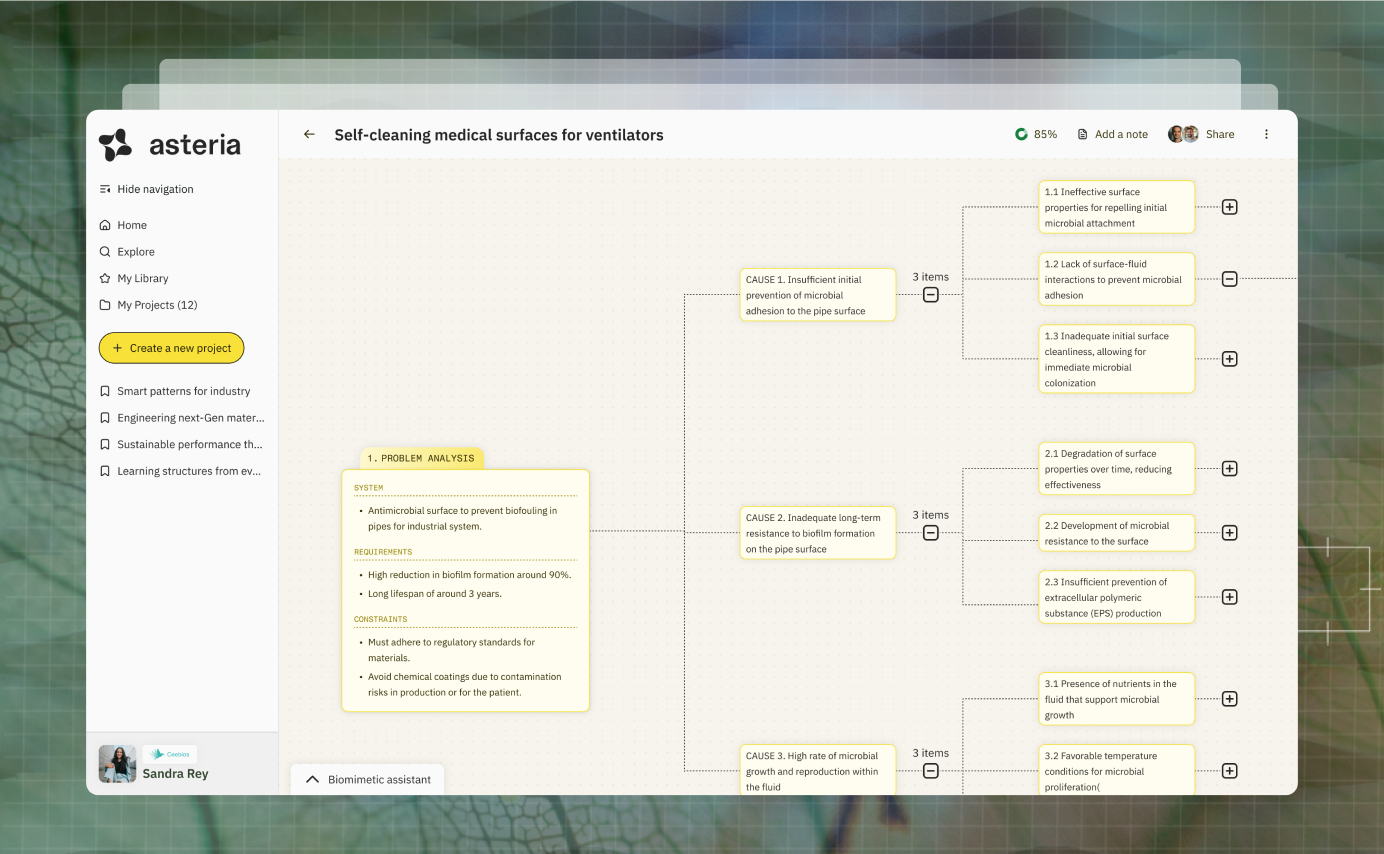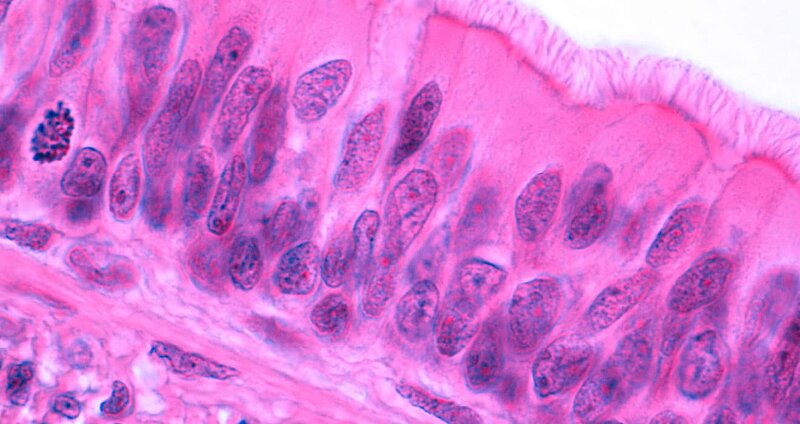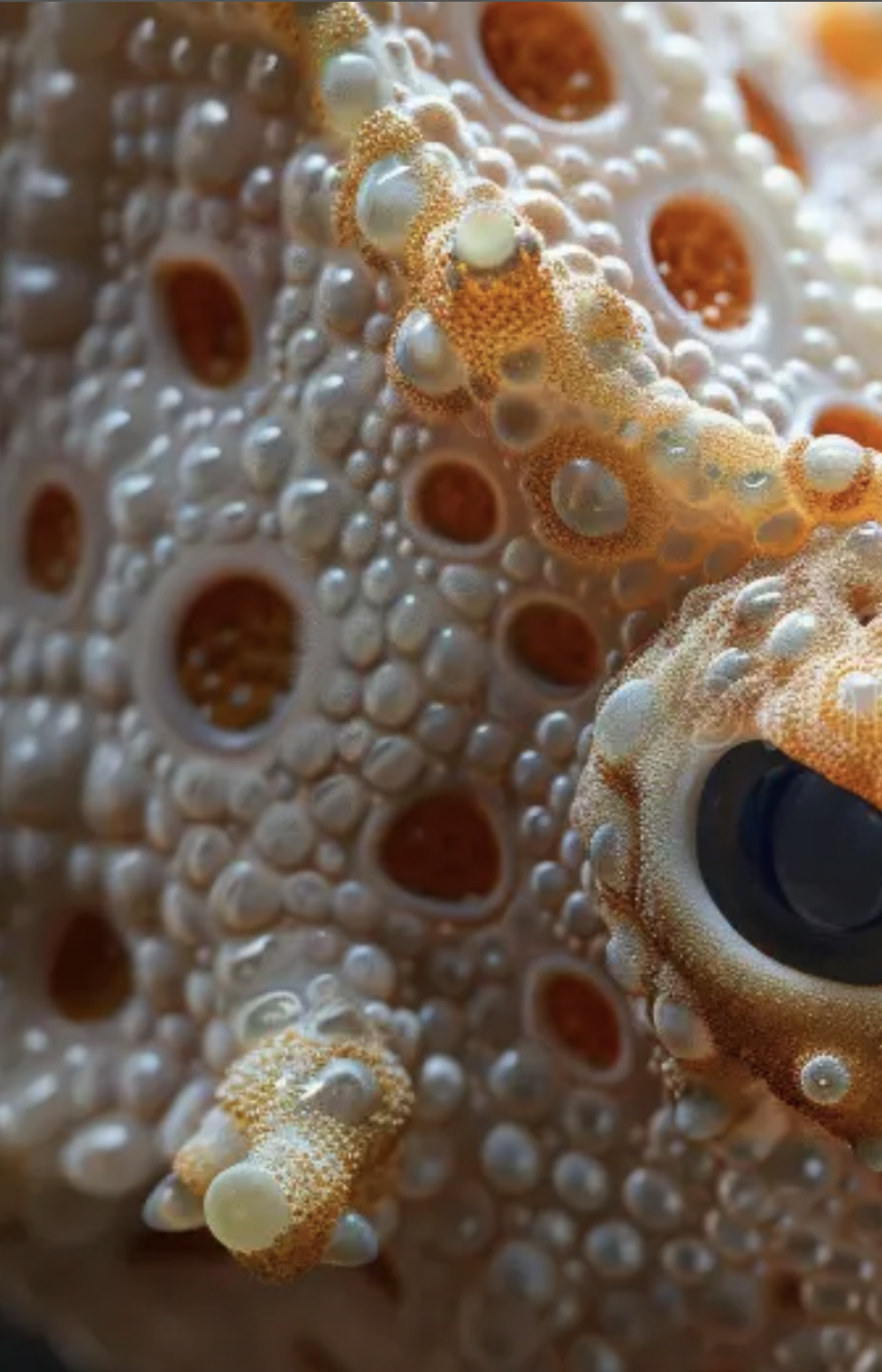Self-cleaning medical surfaces
for ventilators
Ventilator-associated pneumonia is a common and serious hospital-acquired infection, often caused by bacterial colonization and biofilm formation on intubation tubes. Despite emerging treatments, challenges remain in ensuring safety, efficacy, and large-scale deployment. Inspired by nature, biomimicry offers a sustainable path to designing self-cleaning surfaces that actively prevent bacterial growth.

Medical devices and technologies, scientific equipment & laboratory furniture manufacturer
Reduce biofilm formation in tubing systems without chemical contamination.
- Lifespan of 3 years
- High biofilm reduction (~90%)
- Exposure to fluids at variable flow rates
- Compatibility with medical material
Why do ventilators promote biofouling?
Medical ventilators create a warm, humid, nutrient-rich environment ideal for microbial growth. Despite sterilization efforts, several structural and biological factors facilitate microbial fouling:
- Smooth pipe surfaces enable fast bacterial adhesion when in contact with fluids
- Surface wear over time reduces anti-adhesion properties
- Bacteria adapt and produce biofilms that reinforce their attachment
- Nutrients, heat, and stagnant zones create ideal conditions for colonization
AI-driven analysis helped identify the root causes of these issues.

Nature-inspired mechanisms to tackle biofouling challenges
The biomimetic strategies explored for this project draw on natural adaptations that limit microbial adhesion. Examples include:
- Topographic structures: lotus leaves, shark denticle, dragonfly wings, crab shell, duck feathers
- Chemical antifouling coatings: Chlorella, Ircinia oros, mussels proteins
- Hydrophobic coating: Duck feathers, bark
- Self-assembly of a protective layer: Biomineralisation
Together, these approaches inspire robust and durable anti-fouling surfaces for industrial and medical use.
Asteria then helps you generate ideas of concrete bioinspired concepts leveraging both the various selected biological mechanisms and the modeling of the project's context.



Designed for R&D innovation,
design and durability
Collaborate with nature
GET a demo





.png)
































